Stocking your fridge or freezer with salmon is a smart idea—the fish is loaded with muscle-building protein, anti-inflammatory omega-3s, and metabolism-supporting minerals. Plus, there are so many ways to cook salmon that make it hard to get bored of. But picking quality fish is just as important as how you cook it. The quest for a delicious dinner starts at the grocery store.
With this in mind, we spoke to a handful of professional chefs to get their expert opinion on how to go about selecting the best fresh salmon in stock while grocery shopping. Read on to learn the secret to selecting the best salmon in the store—and for more secret life hacks, be sure to also check out Diet Secrets of the Longest Living People in the World.
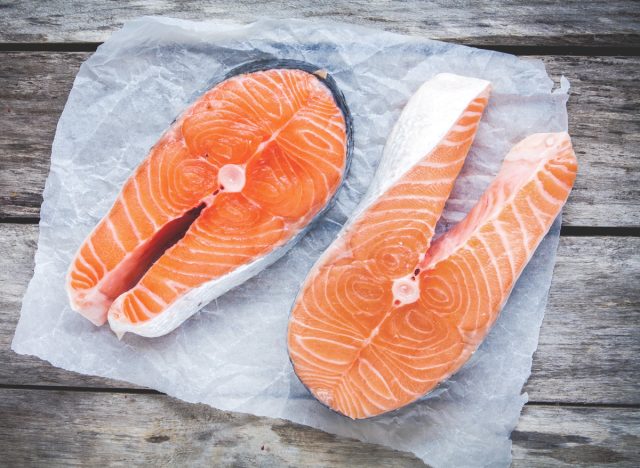

Not sure if you want to spend extra cash on the wild-caught salmon over the farm-raised? Larry White, head chef and owner of Lo Lo’s Chicken & Waffles, Brunch & Sip, and Monroe’s Hot Chicken, claims that both boast unique benefits.
“Even though farm-raised salmon is usually frowned upon, there are technologies set into place that make it incredibly safe for eating,” White tells Eat This, Not That! “Farmed salmon carries a lower cost and is a sustainable alternative to traditionally caught salmon. Both types keep certain nutrients. For example, farmed salmon has more fat while wild salmon has more calcium, zinc, and potassium.”
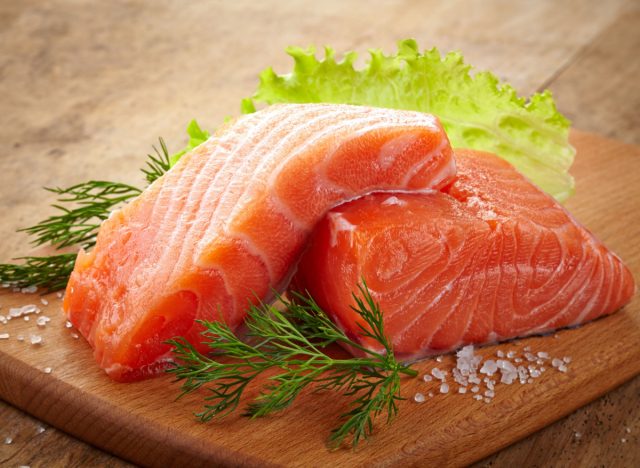

Color and moistness are great ways to tell if the salmon is fresh or not.
“There shouldn’t be any brown or other discolored spots on the salmon,” White explains. “The salmon should look anywhere from bright pink to deep red. Avoid any salmon that looks pale.”


I know this one might be a head-scratcher—if fresh salmon isn’t supposed to smell fishy, then what should it smell like?
“Fish is not supposed to smell fishy. It should smell like the ocean,” says Chef Hector Diaz, chef de cuisine at La Grande Boucherie in New York City.
If salmon smells fishy or sour, that’s a sign it’s gone rancid and isn’t safe to eat, according to the FDA. This logic applies to both whole fish and fillets.
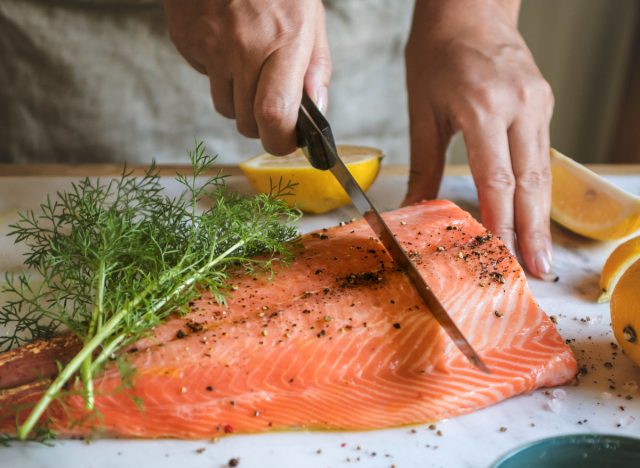

All the chefs we consulted agree that mushy salmon is a major no-no.
READ RELATED: James Marriott Height, Weight, Age, Body Statistics
“Always looks for firmness when it comes to fresh salmon,” says Chef George Jewell, head chef at Clutch Restaurant in Atlanta. “Try to avoid mushy salmon—that is a key indicator that it isn’t fresh.”
In addition to the firmness, the salmon’s skin should be wet and slick.
“If the fish is dressed [aka when the guts have been cleaned out and the tail, fins, head, and scales have all been removed], a run of one’s finger down the belly should feel wet,” says Diaz.
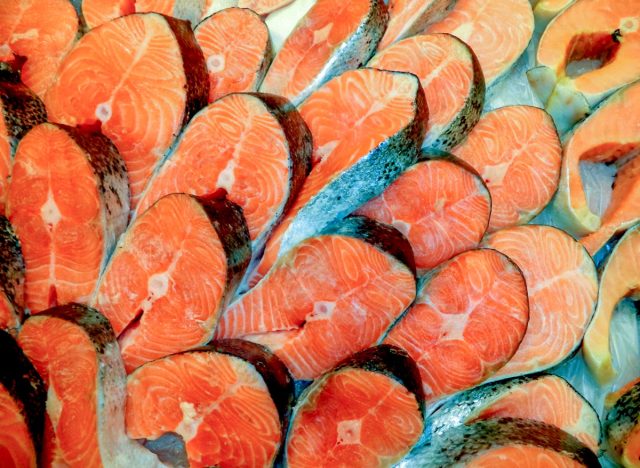

For the freshest salmon, it’s best to get it locally and in season.
“It’s best to buy wild salmon during season, which is usually from May to September,” Jewell says. “Of course, you can get wild salmon during other times—but if you get it during this time, try to get frozen wild salmon. This is because frozen is usually frozen instantly and shipped, which allows it to stay flavorful and retain [the most] nutrients.”
“Even though technology such as flash-freezing helps salmon lock in freshness and flavor, go for local salmon to make sure you are getting the freshest fish possible,” White adds.
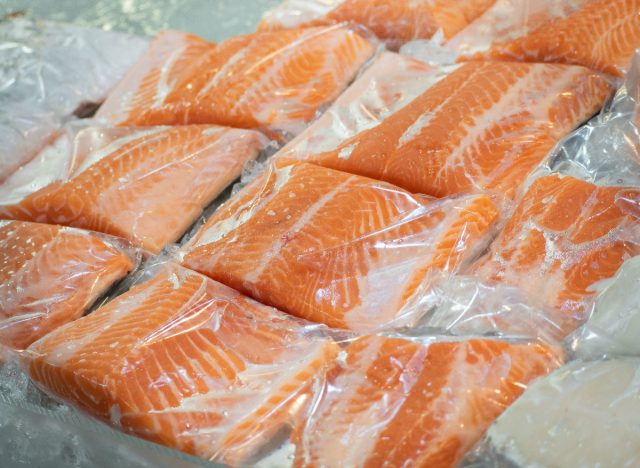

If you’re opting for frozen salmon, sometimes its packaging will hide the fishy imperfections. If the packaging is clear, pay attention to the ice crystals and freezer burn.
“This lets you know the salmon was either refrozen after being thawed out or isn’t the best quality. Those are two things you want to avoid,” says Jewell.
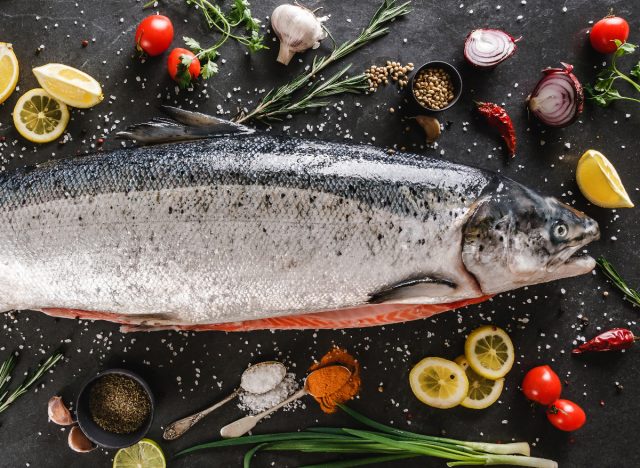

If you’re going for whole fish, make sure that the eyes are clear—not glossy. According to Diaz, glossed-over eyes are a tell-tale sign that the fish has been sitting out for a little too long. Diaz also suggests assessing the fins on your whole fish, as these should be intact without any tears.
April Benshosan
Source:










